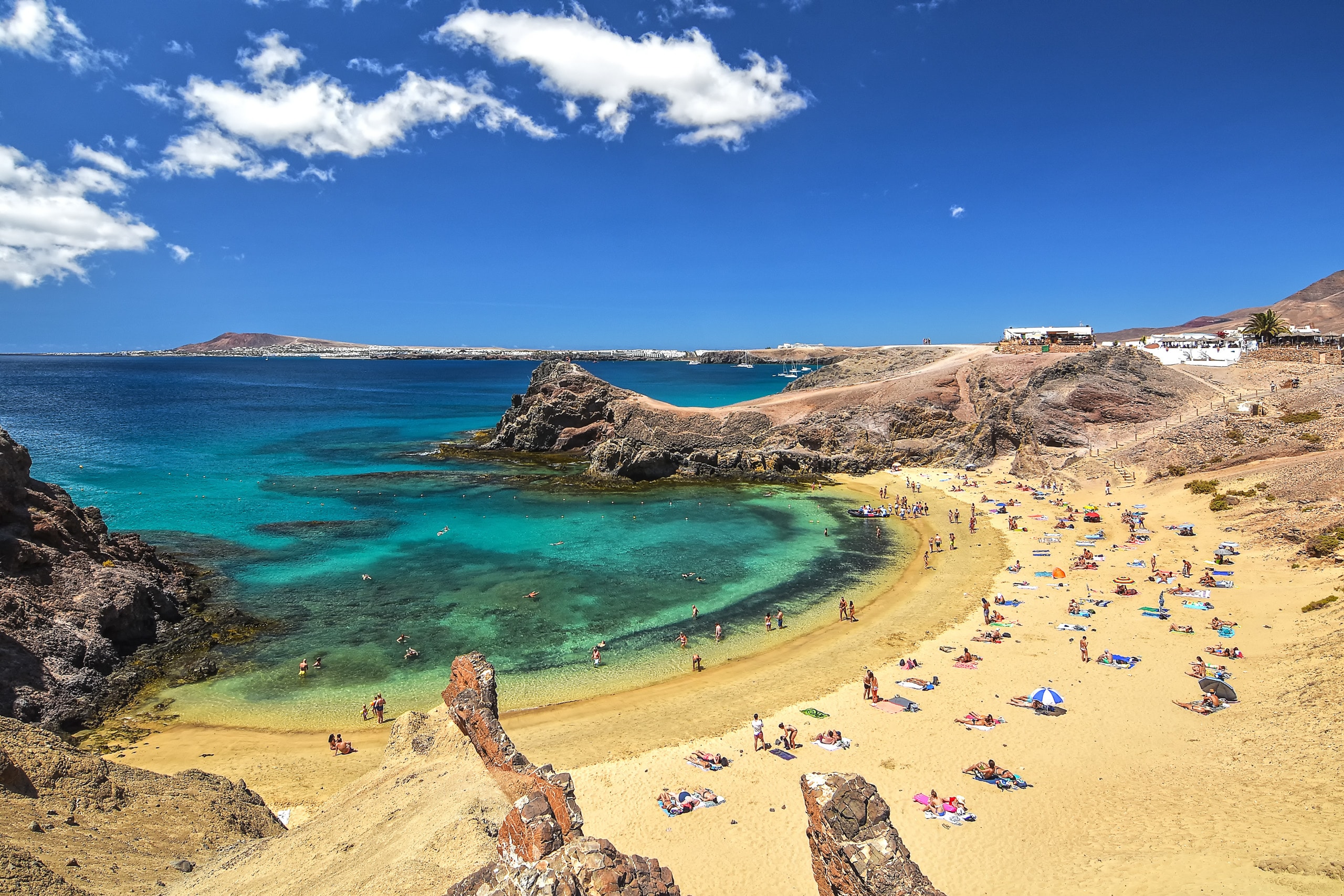
Lanzarote (Arrecife), Canary Islands
Lanzarote (Arrecife), Canary Islands
Lanzarote is the fourth-largest island in the Canary chain. The most easterly of the Canaries, the island lies some 70 miles off the shore of North Africa. Like its neighbours, Lanzarote was shaped by a period of intense volcanic activity. The resulting landscape possesses a stark, near-lunar beauty: Over 300 now-dormant volcanoes left behind petrified lava seas and deep layers of volcanic ash. Today, visitors to these "Mountains of Fire" ride camels through the lava beds and even enjoy a volcano-broiled steak at the park's restaurant. (Subsurface temperatures still reach 800F in the park.) Despite the seemingly barren land scape, island farmers grow abundant crops of tomatoes, onions, melons, and figs in addition to Malvasia, a clear yellow wine produced from malmsey grapes. Lanzarote's rugged landscape, its warm climate, its lack of rainfall, and its beaches have proved attracted to travellers: Tourism dominates the island economy with some 2 million visitors arriving annually.
Points of Interest
- Timanfaya National Park
- Jameos del Agua
- César Manrique Foundation
- Mirador del Rio
- Jardin de Cactus
- El Castillo de San Jose/Museum of Contemporary Art
- Bodega
- Puerto del Carmen
More about Lanzarote (Arrecife), Canary Islands Points of Interest
-
Timanfaya National Park -
Covering over 12,600 acres, this lunar landscape looks much like it did after violent volcanic eruptions spewed chunks of molten lava over the entire area.
-
Jameos del Agua -
This massive four-mile long volcanic tunnel was formed by molten lava and turned into a lush tropical garden, pool, bar and 600-seat auditorium.
-
César Manrique Foundation -
The artist's former house and studio sits on top of a volcanic trail, its interior built around five volcanic bubbles. Since 1982, the Foundation has worked for the conservation, research and promotion of Manrique's work.
-
Mirador del Rio -
Lanzarote's most famous viewpoint is situated on Famara Cliff. The stone structure's semi-circular shape and large domed roof offer breathtaking views over the northern coastline, and the island's oldest salt plains.
-
Jardin de Cactus -
Built on an old quarry of volcanic ash extraction, the garden features 10,000 types of cactus from over 1,400 distinct species. Outside the entrance stands the towering 26-foot tall green metal cactus, Manrique's last work.
-
El Castillo de San Jose/Museum of Contemporary Art -
Erected in the 18th century to defend the island against pirate attacks, César Manrique renovated the castle in 1975 and today it holds the International Museum of Contemporary of Art.
-
Bodega -
Translated as "wine cellar," a bodega is a warm and welcoming wine shop, tasting room or marketplace where visitors can sample or purchase wine.
-
Puerto del Carmen -
Just south of Lanzarote, this tiny fishing village boasts warm, golden beaches that overlook the Atlantic. Renowned as the most tranquil in the Canary Islands, the water is perfect for swimming and other water sports.